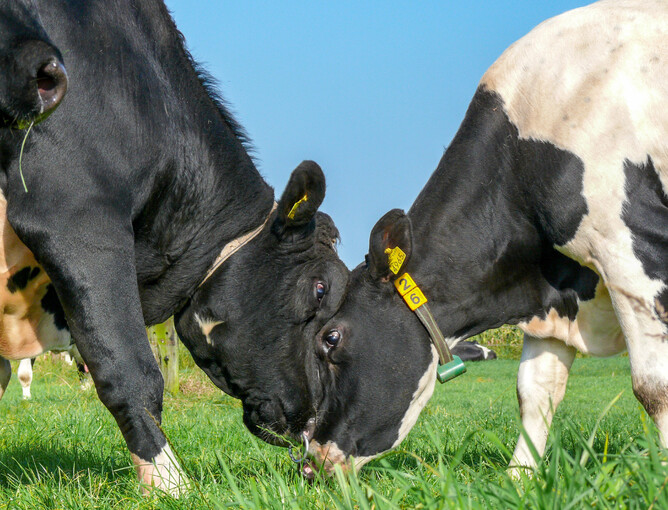Bulls are a key part of the process of getting good mating results.
Having enough bull power over mating is very important. The number of bulls required depends on how many cows need to get pregnant. For many, you may need to ask yourself how many cows you expect to not be pregnant after your AB period finishes?
A good calculation for the ratio of how many bulls you need per cows is: decide how many cows there are to get in calf, multiply that number by 3%, and round it up to get the number of bulls required (minimum of two bulls).
After a non-cycler programme, cows become synchronised. Approximately 44% of the cows syncronised and mated will come on heat again 18-21 days after the initial mating. A higher ratio of 1 rested bull per a maximum of 10 cows is recommended for these days – or some people will bring back the AI technician.
Yearling heifers are less obvious in their heats and bulls need to go looking for them, so a ratio of 1 bull per 15-20 heifers is advised.
It's also good idea to have two bull teams and alternate between them, so they have time to rest. You don't want overworked bulls to let down your in-calf rate targets. Bulls can get tired, sick, injured, or lame, so it pays to be able to give them some rest and recovery time. Having more bulls available also means you have back-up if a bull has to be pulled out of the rotation due to injury or sickness.
Bulls that do not perform well can be costly, so keeping them in groups and swapping them in and out also helps reduce the risk from any that are infertile or unable to serve cows properly. Past studies have shown that 15% of yearling bulls and 20% of mixed age bulls would fail breeding soundness exams (when scrotal contents, semen quality and mating ability are looked at). At a minimum, watch your bulls mounting to check they can do so effectively.
Try to keep bulls in their separate, smaller groups and not mix them, as this helps limit fighting, which can lead to injuries and bulls being distracted from their main duty of mating!
Remember to check bulls have had a recent annual BVD/IBR vaccination. Testing them for BVD before purchasing them helps reduce the risk of disease being spread through the herd at mating time. Other diseases, such as pink eye, can also be introduced to cows by bulls. So make sure they all look healthy before bringing them onto the farm, and ideally quarantine all bulls for two weeks to allow any diseases they are incubating to start showing signs.
Lame bulls are always a problem during mating. Their hooves are often soft and can bruise easily, especially when they are mounting cows continuously or jostling in the lanes or on the yard. Try to train bulls to stay behind in the paddock, or at least attempt to minimise their time in the yard at the milking shed.
On a final note, every spring there are farms struggling with oversized calves being born – always remember that the genetics of the bull do matter, and thinking about whether the bull is a suitable size for the cows it will be covering is important.

